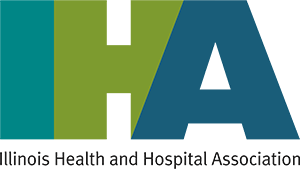Kaiser Reports on COVID-19 Impact on Employment
June 18, 2020
The Kaiser Family Foundation (KFF) has released two analyses on the impact of the COVID-19 pandemic on employment.
A new chart collection finds that between Feb. and April 2020, nearly 1.5 million healthcare jobs were lost. While more than 300,000 health services jobs were recovered in May 2020, mainly in dental offices, employment in some healthcare settings continued to decrease. Hospitals (-2%; -122,000 jobs) and nursing and residential care facilities (-4%; -123,000 jobs) had relatively fewer job losses compared to other healthcare sectors through April, but were among the few settings to continue losing jobs in May.
The rise in healthcare unemployment follows a sharp decline in utilization and revenue for non-emergency services. Many providers delayed or canceled appointments for routine care and elective procedures amid concerns that COVID-19 patients would overwhelm the health system; others closed their facilities entirely. Many patients alsfkfo chose to forgo non-emergency care, due to stay-at-home orders issued by local and state governments and fear of contracting the virus in healthcare settings. The chart collection also includes data on gender disparities and geographic variation in healthcare job loss, as well as a breakdown of job loss by sector.
A new KFF analysis finds nearly one in four workers (24%) are considered at high risk of serious illness if they get infected by the novel coronavirus, highlighting the challenges that businesses, public offices and other employers face as they move toward reopening. The analysis estimates 37.7 million workers (based on their work status in 2018) are at high risk of serious illness from COVID-19. This includes 10 million who are at least 65 years old and an additional 27.7 million who have pre-existing medical conditions that the Centers for Disease Control and Prevention says put people at higher risk for severe illness from COVID-19. Many of these people may be out of work now or working remotely, but would be at greater risk if they had to return to in-person work. The analysis also estimates that 12 million more at-risk adults who do not work themselves live in households with workers. For this group, indirect exposure could be just as serious of a risk as going to work themselves.
The Kaiser Family Foundation (KFF) has released two analyses on the impact of the COVID-19 pandemic on employment.
A new chart collection finds that between Feb. and April 2020, nearly 1.5 million healthcare jobs were lost. While more than 300,000 health services jobs were recovered in May 2020, mainly in dental offices, employment in some healthcare settings continued to decrease. Hospitals (-2%; -122,000 jobs) and nursing and residential care facilities (-4%; -123,000 jobs) had relatively fewer job losses compared to other healthcare sectors through April, but were among the few settings to continue losing jobs in May.
The rise in healthcare unemployment follows a sharp decline in utilization and revenue for non-emergency services. Many providers delayed or canceled appointments for routine care and elective procedures amid concerns that COVID-19 patients would overwhelm the health system; others closed their facilities entirely. Many patients alsfkfo chose to forgo non-emergency care, due to stay-at-home orders issued by local and state governments and fear of contracting the virus in healthcare settings. The chart collection also includes data on gender disparities and geographic variation in healthcare job loss, as well as a breakdown of job loss by sector.
A new KFF analysis finds nearly one in four workers (24%) are considered at high risk of serious illness if they get infected by the novel coronavirus, highlighting the challenges that businesses, public offices and other employers face as they move toward reopening. The analysis estimates 37.7 million workers (based on their work status in 2018) are at high risk of serious illness from COVID-19. This includes 10 million who are at least 65 years old and an additional 27.7 million who have pre-existing medical conditions that the Centers for Disease Control and Prevention says put people at higher risk for severe illness from COVID-19. Many of these people may be out of work now or working remotely, but would be at greater risk if they had to return to in-person work. The analysis also estimates that 12 million more at-risk adults who do not work themselves live in households with workers. For this group, indirect exposure could be just as serious of a risk as going to work themselves.

